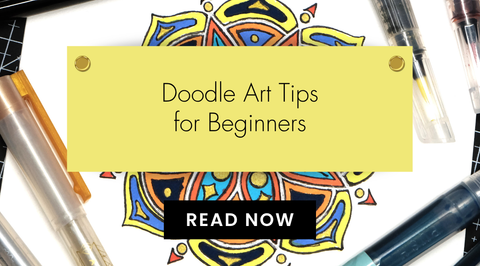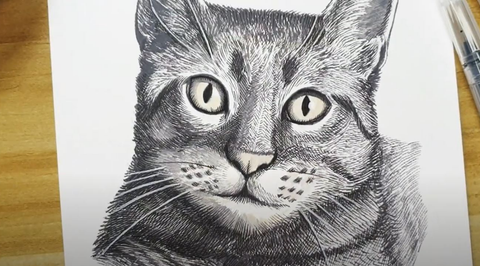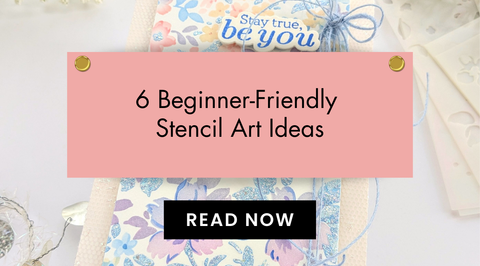10 Simple Sketch Ideas to Spark Your Creativity
Last Updated: October 8, 2025
"Drawing is the artist's most direct and spontaneous expression. A species of writing: it reveals, better than does painting, his true personality." - Edgar Degas

Monochromatic Shading Pencils
Have you ever found yourself staring at a blank page, pencil in hand, but not sure where to begin? Sketching can feel intimidating, but it doesn't have to be. Sometimes, all you need are a few simple ideas to get your creative juices flowing and to fill that page with lines, shapes, and shades.
Let's explore some approachable sketching ideas that will inspire your next masterpiece.
The Power of Simple Shapes
Start with the basics: simple shapes. Circles, squares, triangles, and rectangles can form the foundation for more complex sketches.
Practice doodling or drawing these shapes in various sizes and combinations. This will help you understand proportions and spatial relationships, which are crucial for more detailed work.
Building from Shapes
Once you are comfortable with simple shapes, try combining them to create more complex forms. For instance, use circles and ovals to outline the body of an animal or a person.
This technique helps break down intricate subjects into manageable parts and makes the sketching process less daunting.
Still Life Sketches
Still life is a classic exercise for artists. Gather a few objects from around your home—such as a fruit bowl, a vase, or a stack of books—and arrange them in an interesting composition. Focus on capturing the shapes, shadows, and textures. Still life sketches can improve your ability to observe and replicate real-world objects.

Adding Depth and Dimension
To add more depth to your still life sketches, pay attention to light and shadow. Notice where the light source is and how it affects the objects. Adding shading can make your sketches appear more three-dimensional and realistic. Experiment with different shading techniques, such as hatching or cross-hatching, to find what works best for you.
Nature Studies
The great outdoors offers endless inspiration for sketching. Take a sketchbook with you on a walk and capture the beauty around you. Leaves, flowers, trees, and landscapes are excellent subjects. Try to capture the intricate details of a leaf or the grandeur of a tree. Nature studies can help you develop your skills in drawing organic shapes and textures.

Exploring Landscapes
Expand your nature studies by attempting to sketch entire landscapes. Start with the basic outline of the horizon and gradually fill in the details. Pay attention to the various elements in the scene, such as trees, mountains, and water bodies. This practice will enhance your ability to create cohesive and balanced compositions.
Portrait Practice
Drawing faces can be challenging but immensely rewarding. Start by sketching self-portraits or using reference photos. Focus on the basic structure of the face, paying attention to the proportions and placement of features. As you gain confidence, try sketching from life, using friends or family as models.

Expressive Features
To make your portraits more expressive, study the subtle differences in facial features. Notice how a slight change in the angle of an eyebrow or the curve of a mouth can convey different emotions. Practicing these nuances can make your portraits more lifelike and emotive.
Gesture Drawing

Gesture drawing involves quickly capturing the essence of a pose. Use reference photos or observe people in motion to create loose, expressive sketches. Focus on the overall flow and movement rather than details. Gesture drawing is excellent for improving your ability to depict dynamic poses and action.
Dynamic Poses
Experiment with sketching dynamic poses by observing athletes, dancers, or people engaged in various activities. Try to capture the energy and movement in your sketches. This practice helps you develop a sense of rhythm and fluidity in your drawings.
Exploring Different Mediums
Experiment with different sketching mediums such as graphite, charcoal, pens, or colored pencils. Each medium offers unique qualities and challenges. For example, charcoal can create rich, dramatic effects, while ink encourages precision and bold lines. Trying various mediums can expand your artistic skills and inspire new ideas.

Mixed Media
Consider combining different mediums in a single sketch. For example, start with a graphite outline and add details with ink or color with pencils. Mixed media sketches can add complexity and depth to your artwork, providing a richer visual experience.
Daily Sketching
Make sketching a daily habit. Set aside time each day to draw something, no matter how simple. A daily sketching practice helps you improve steadily and keeps your creativity flowing. It can be as brief as a five-minute doodle or a more detailed study.

Sketching Journals
Create a sketching book or journal to track your progress and sketch ideas. Fill it with daily sketches, notes, and inspiration. Over time, you'll have a visual record of your artistic journey, which can be both motivating and enlightening.
Using References
Don't be afraid to use references. Photographs, artworks, and even other sketches can provide valuable guidance. Analyzing how others approach a subject can offer new perspectives and techniques. Just be sure to use references as a tool for learning rather than direct copying.
Embrace Mistakes
Remember, mistakes are part of the learning process. Every sketch, successful or not, teaches you something valuable. Don't be discouraged by imperfections. Instead, use them as opportunities to grow and refine your skills.
Sketch Your Way to Success

Sketching is more than a technical skill; it's a form of expression and a way to connect with the world around you. By starting with simple shapes, exploring various subjects, and practicing regularly, you can develop your sketching abilities and discover your unique artistic voice. Keep your sketches, reflect on your progress, and most importantly, enjoy the process.
Ready to start sketching? Find more sketching and drawing tips and tricks in The Creative Corner.








